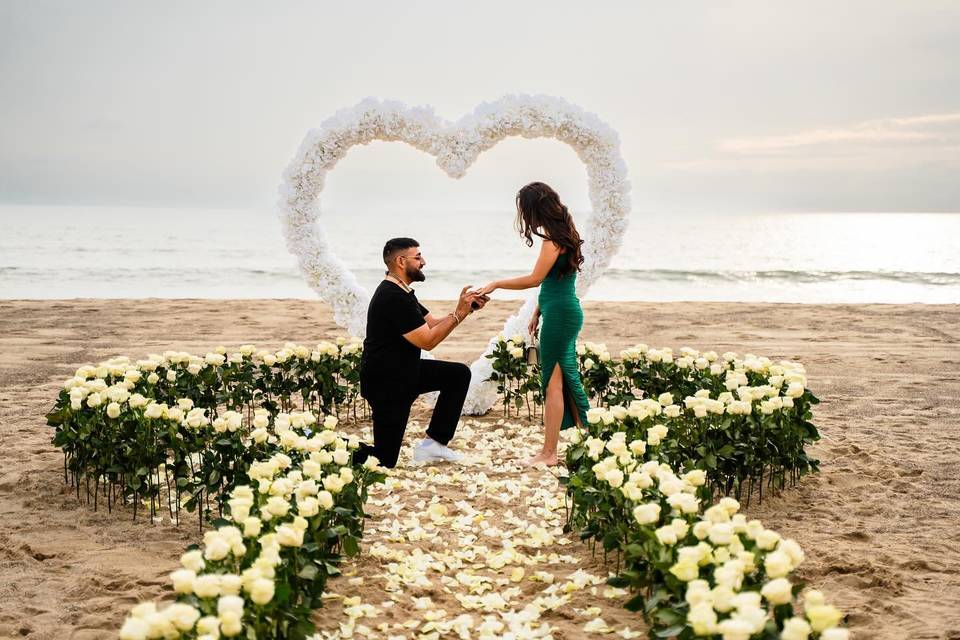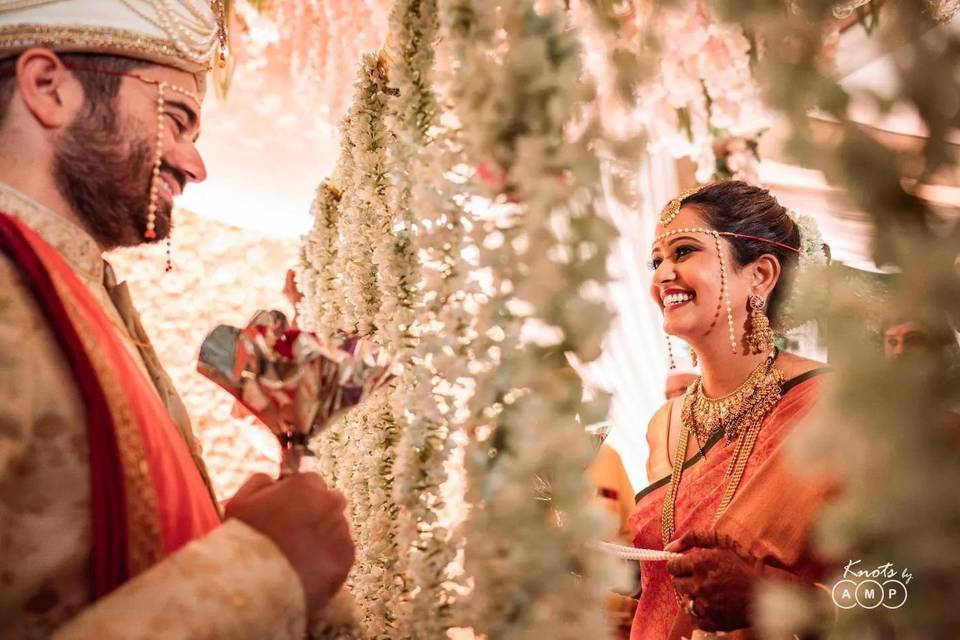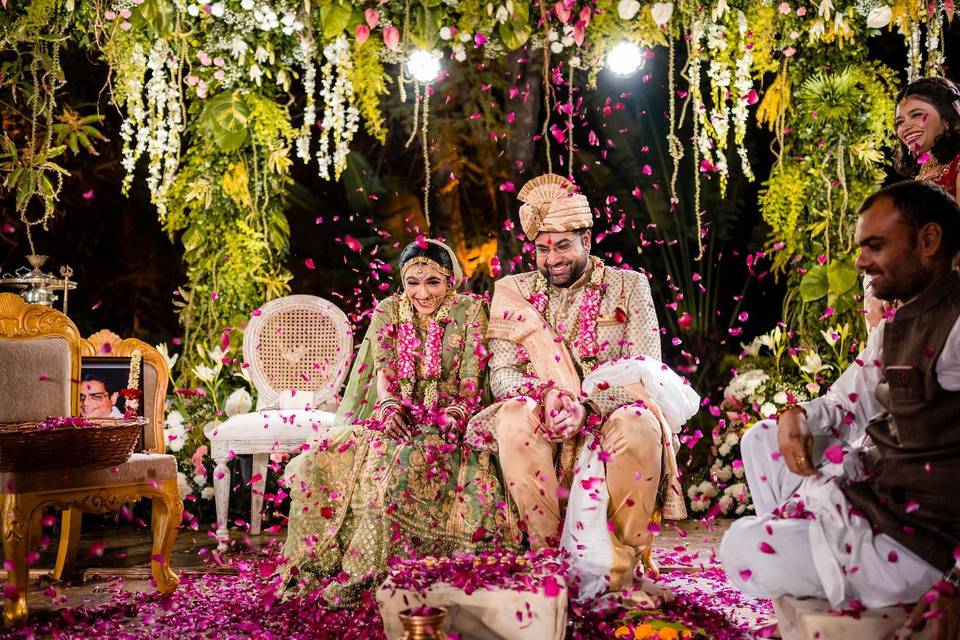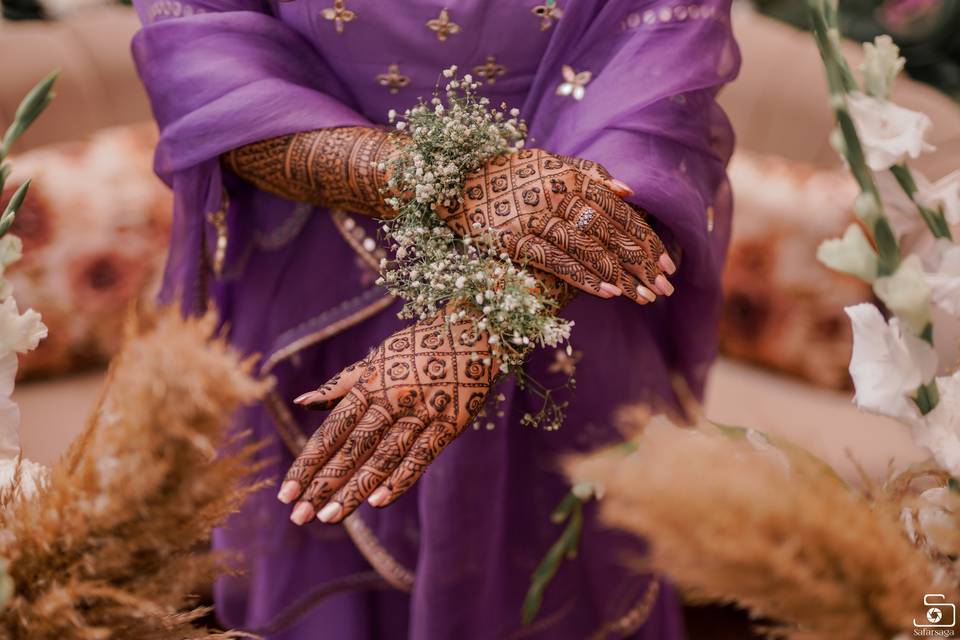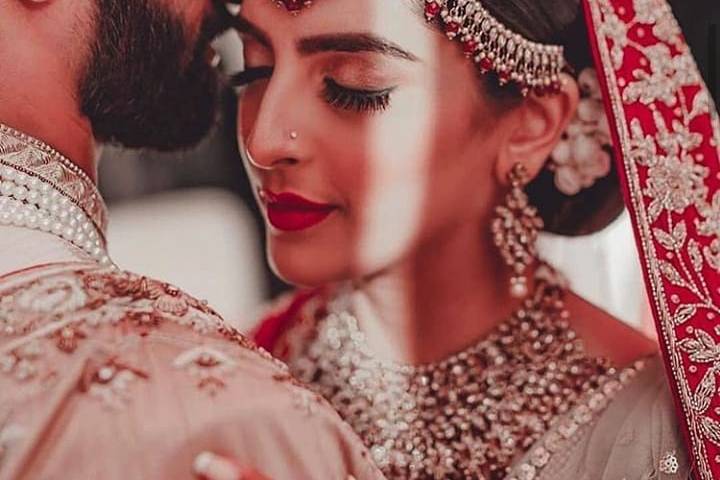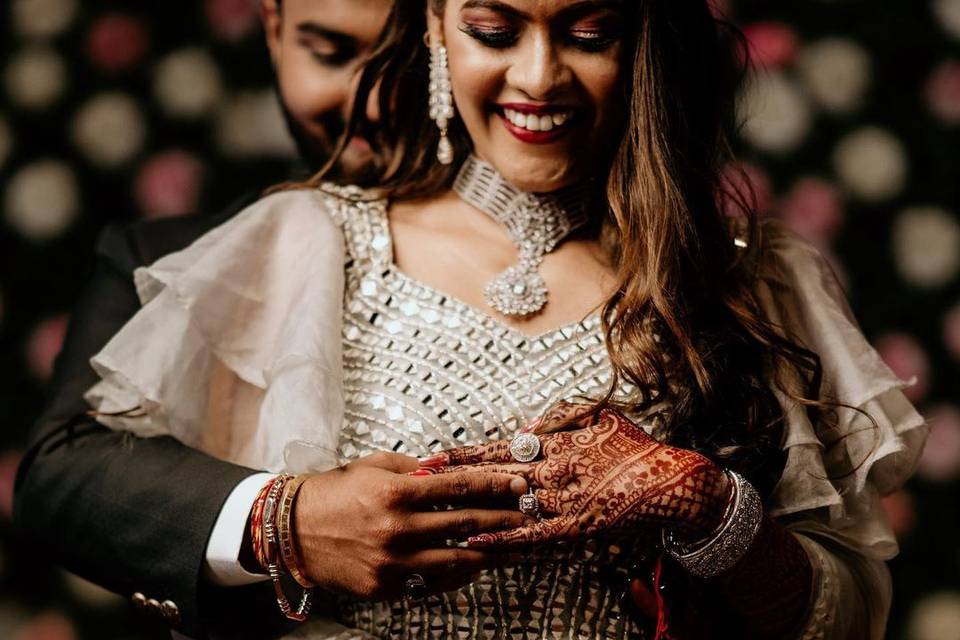Decoding Rajput Wedding: All You Need to Know About This Royal Affair
Right from Tilak to Mahira Dastoor & the Mehfil; you know it’s a Rajput wedding when you see lights, colours & royalty. Here's decoding a Rajputana wedding for you.
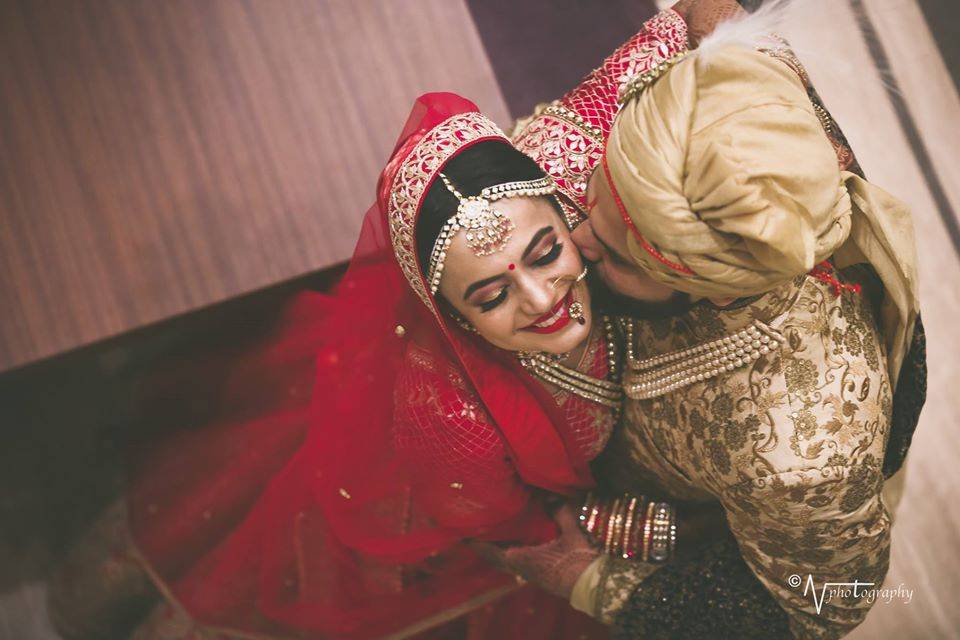

Image Courtesy: Abhishek Verma Photography
Being a country of 1.34 billion people, or more that is yet to be recorded, India is known for its vast religious and regional recognitions. With more than 9 recognised religions till date and uncountable diversities of cultures for each of these ethnic groups, the rituals of the most celebrated occasion of the world - the wedding, are a treat to be a part of or simply know of. Here's to celebrating the weddings of the 1.34 billion people in full fervour of the festivities and soaking in the colours of the cultural beauty, cheers to decoding Indian weddings!
Elephants and horses clas in embroidered silk fabrics, swords, gigantic drums, huge metal Shehnai...aren’t you getting the royal feels already? To begin with, the #decodingIndianWeddings, welcome to a true blue Rajput wedding that exhibits the rich ethnicity and flavours of Rajasthan. Being the land of courageous fighters, Rajputana still holds its traditions strong, especially in the festivals and weddings.
Even today, when you see a Palla Dastoor or a Rajput Baraat at a Rajasthani wedding you feel royal elegance oozing out. Sounds exquisite, doesn’t it? Let’s take you on a tour of the beautiful customs and traditions of a Rajputana wedding ceremony.
Pre-Wedding traditions

Sarva Sampurna with Chhattees Guna (Match the stars)
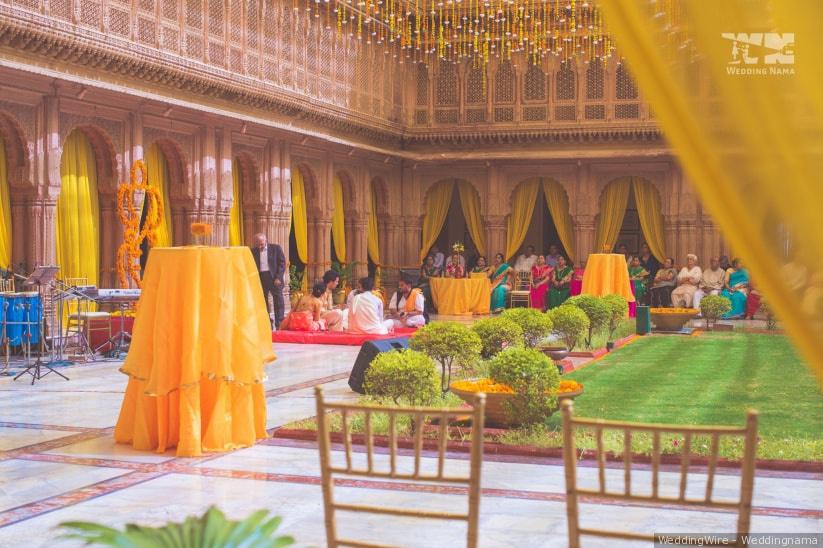
Even if it’s not a perfect “Chhatees Guna” match, this custom is basically followed for horoscope tallying, or simply matchmaking. Both the families check for some royal lineage in the other party. That’s an important criterion for a Rajput wedding.
Tilak ceremony (Official Seal)

The Tilak or the Roka ceremony marks the official commencement of a Rajput wedding. All the male family members of the bride visit the groom’s house and either brother or the mamo'sa (maternal uncle of the bride) applies Tilak on the groom’s forehead. This ritual is then followed by gifting clothes, fruits, sweets and so on to the groom. What is royal for the Rajputs? They also gift the groom with a sword!
Ganpati Sthhapana (Puja for peace)

A few days before a Rajput wedding, the Ganesha idol is installed in the individual homes of the bride and the groom and a Havan and a Griha Shanti puja is performed to seek pious blessings. The family then worships the deity and seek His blessings for a hassle-free wedding.
Mel (The Commencement Feast)

Mel is a Rajput wedding ceremony where both the families of the groom and the bride throw a grand feast to their respective guests once the wedding proceeding start and the Tilak ceremony and the Ganpati Sthhapana is done. It is almost always a dinner that is accompanied by traditional dance performances or some ceremonial songs and music and is considered as the official announcement of the wedding.
Pithhi Dastoor (Music and Haldi fun)

A Pithhi Dastoor also known as the Baan, often also called as Tel Baan in Rajasthan, in a Rajput wedding is a fun combo of Haldi and Sangeet ceremonies that happens in their respective homes. The bride and the groom are applied turmeric and sandalwood paste in their respective homes. There are Dholak and Nagara beats, lots of laughter and playfulness and traditional Sangeet songs sung and danced to by the women of the families.
Chaak (The Earthen Pot ceremony)

Image Courtesy: Abhishek Verma Photography
Also known as Chaak Pujan among Rajputs, this ceremony during a wedding is similar to the Jaago ceremony of the Punjabi Wedding, where a kalash or earthen pots are carried by 5, 7 or 11 women of the groom's family to the potter's place while singing ceremonial songs. The pot represents the universe and the Chaak symbolises the chakra of Lord Brahma meaning creation and prosperity. This is a ceremony that celebrates the new beginnings and a Tilak and rice is put on the Chaak to pray.
Mahira Dastoor (Enter Uncle)

Mahira Dastoor or Bhaat Dastoor is a pre-wedding ceremony where the maternal uncle of the bride contributes generously to his niece’s wedding. The maternal uncle of the bride or ‘Mama'sa’ and his family make a grand entrance to his sister’s house. He then gifts his sister and her whole family with clothes, sweets and jewellery. This particular ceremony in a Rajput wedding signifies that the ‘Mama’ is ready to bear responsibility for his sister’s family wedding and play a pivotal role throughout.
Bindori/Bindora (Bachelorette/bachelor meals)

The respective Families, friends and relatives of groom-to-be and bride-to-be arrange for separate dinners and luncheons and serve the bride and groom their favourite dishes before they get hitched. This is custom is called a Bindora (for the groom) or Bindori (for the bride) at a Rajput wedding and this is one royal party to look forward to.
Janev (Monkhood averted!)

At a Janev ceremony in Rajput weddings, the groom wears a saffron-coloured robe and with the family priest, he performs a Havan. This signifies his taking of responsibilities as a householder. Once the Havan is done, the fun part is the groom ‘pretends’ to run away to attain monkhood, when his maternal uncle stops him and convinces him to get married. This transformation of the groom from being a bachelor to a grihastha is celebrated in full fervour.
Palla Dastoor (Gifts and more)

The groom’s family comes to the girl’s house with gifts, clothes, jewellery, sweets and all kinds of bridal trousseau items. A Palla or a Padla Dastoor usually takes place a day or two before the wedding.
Nikasi, Baraat, Dhukav (The grand procession & warm welcome)

Image Courtesy: Abhishek Verma Photography
A Rajput groom dons a Safa or a Pagdi before he leaves for the wedding Mandap with the baraati. His sister-in-law applies Kajal on him from her eyes to mark the Nazar Utarna to ward off the evil eye and is often seen among Indians on any auspicious occasion. The groom’s sister-in-law (brother's wife) or the sisters tie golden threads to the mare's reigns and he visits a temple for blessings before the Nikaasi.

Image Courtesy: Abhishek Verma Photography
The Baraat at a Rajput wedding is a showcase of grandeur. The groom wears gold Achkan, a sherwani Jodhpuri Juttis, traditional orange turban, a Kamarbandh, pearl necklace, carries a sword and rides an elephant or a horse. All the other men in the family wear turbans, sherwanis and Achkans too. The grand entourage then proceeds towards the wedding venue singing and dancing all the way.
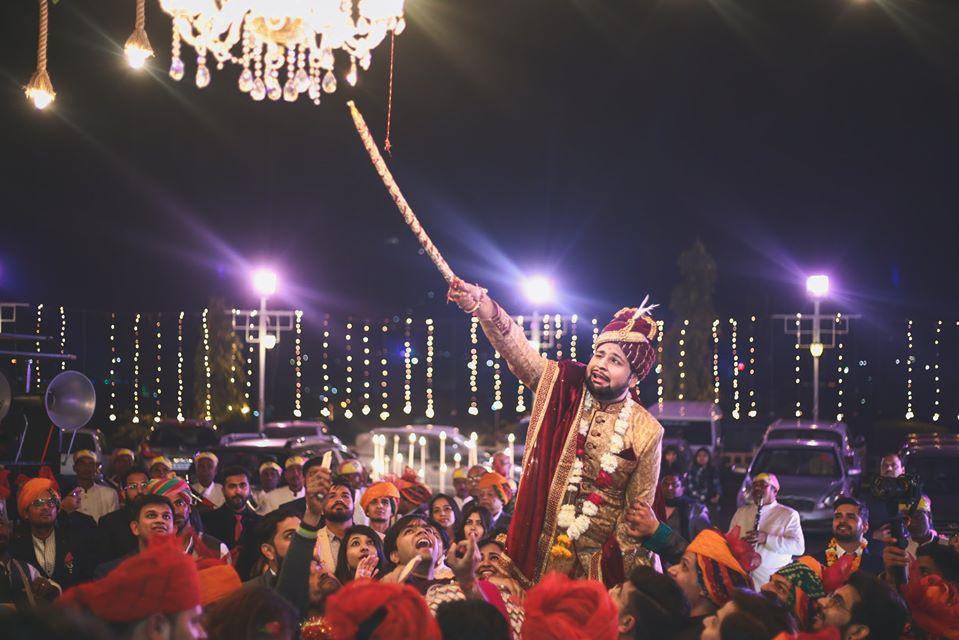
Image Courtesy: Abhishek Verma Photography
Finally, when the Baraat reaches the venue, the bride’s family members receive the Baraatis with a warm welcome. The groom hits a Toran (a particular decoration done at the entrance) with his sword symbolising the warding off of evil and acceptance of the welcome to his Sasural with God's grace. The bride’s mother then puts Tilak on the groom and performs Aarti.
Wedding Traditions & Rituals
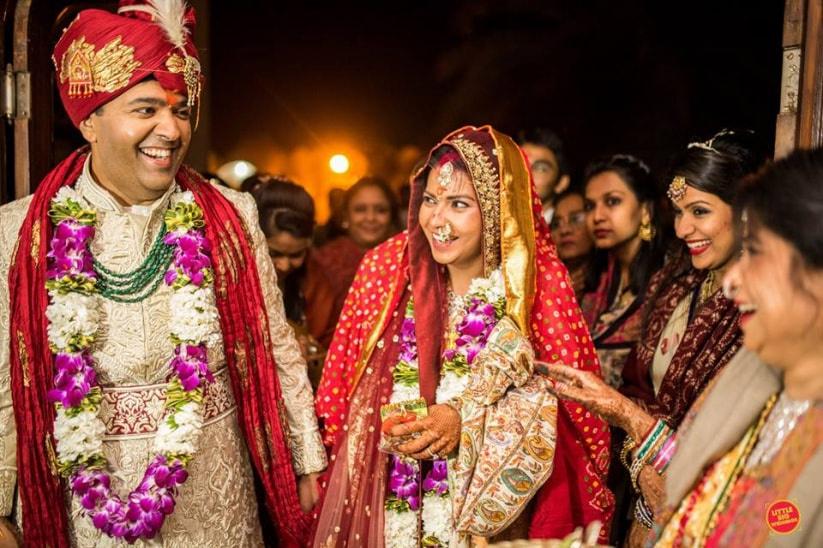
The bride and the groom sit by the holy fire while the priest chants Vedic mantras of matrimony. Throughout a Rajput wedding, the bride’s face is hidden behind a veil. While all the women attend the wedding rituals, the male members tend to the guests and take care of the hospitality. Here are the wedding rites and traditions:
Granthi Bandhan or Gathjoda (The holy knot)
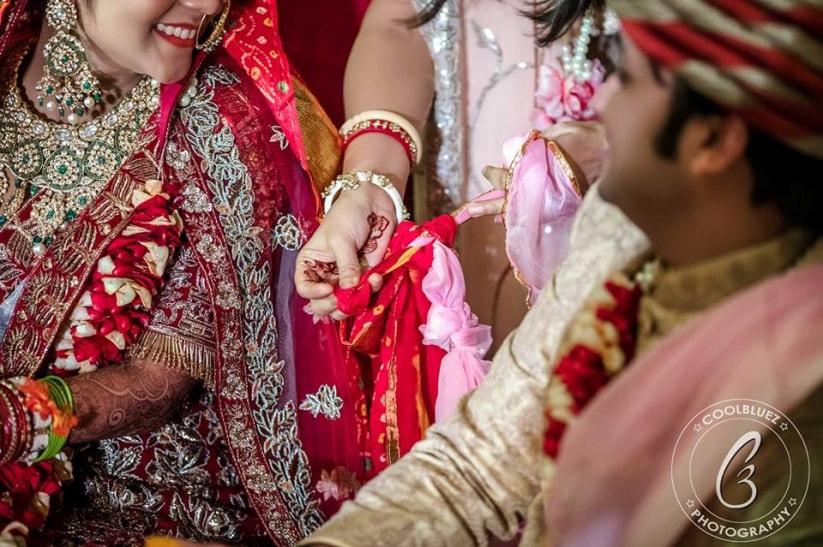
Symbolising the eternal bond of two souls, the cloth around the groom’s waist is tied with the Chunari (dupatta) of the bride. This is usually done by either the priest or the groom’s sister.
Paanigrahan (Take my hand)

The groom takes the bride’s hand in his and promises to be together for eternity.
Sindoor (Colour me red)

The groom applies Sindoor on the bride’s forehead and centre hair parting. This is an auspicious custom where the groom welcomes the bride in his life. And it also completes the whole bridal look.
Pheras (The seven oaths)

The bride and the groom together, circle the holy fire seven times (signifying seven lives) taking vows to be with each other in good and bad times. The priest chants mantras which the couple then recites together.
Aanjhala/Chhol Bharai (Lap full of duties)

At the end of a Rajput wedding, there is a custom where a bag full of money is placed on the bride’s lap. This symbolises the entire family’s financial responsibility is on her. She’s then asked to divide equally the money amongst her sisters-in-law and husband. The couple then touches the elders’ feet and take their blessings.
Post-wedding traditions
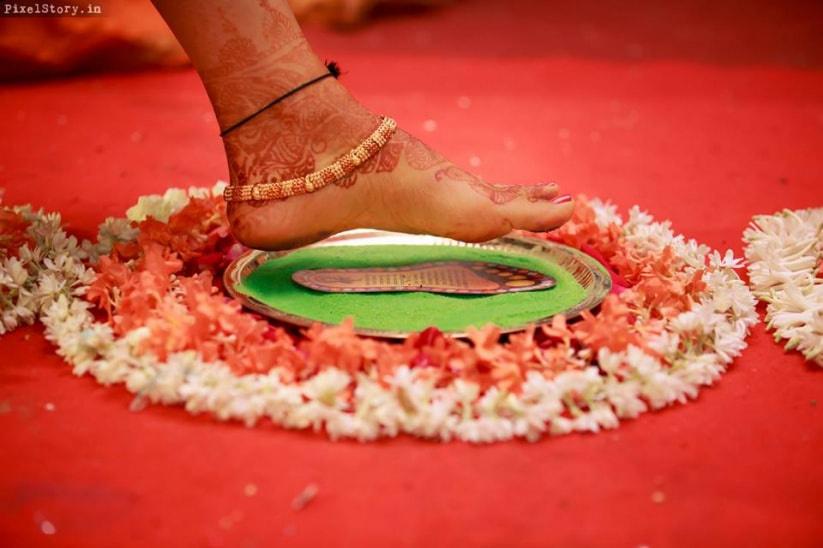
Grihapravesh (Welcome bride!)
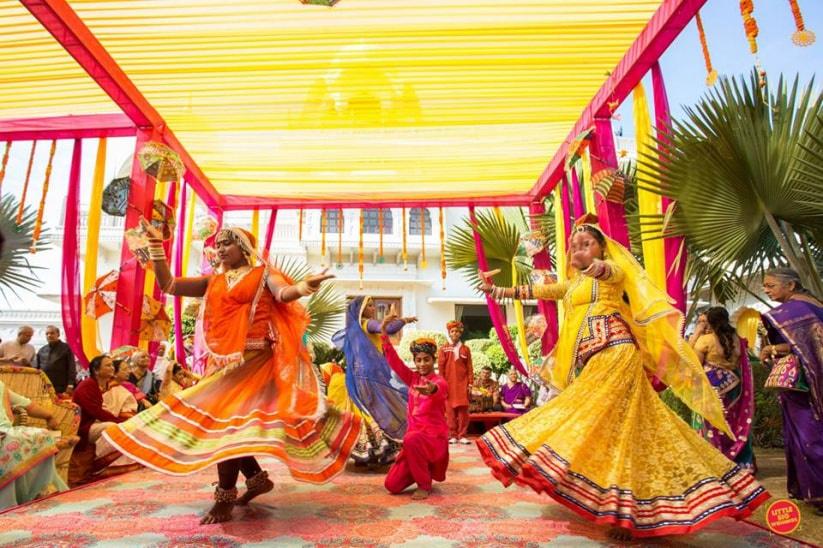
The groom’s family welcome the new bride into the family with Puja and rituals. There are fun games and ice-breaking traditions involving the couple to ease up the new member of the family and make her feel at home.
Pagelagni (Blessings and gifts)

On the following day of Grihapravesh, the bride gets introduced to each family member and relatives. The groom’s family individually bless her with gifts.
Bidai (Adieu bride)

Bidai or a farewell is the official goodbye to the bride when she leaves her parental house. At a Rajput wedding, a coconut is placed under the wheels of the car which is to be broken when it moves. The groom has to give the bride a gift (usually a piece of jewellery) for unveiling her face for the first time since the wedding.
A Rajput wedding is an exhibit of grandeur. A Mehfil is organised separately for the men and women which is a celebratory evening full of music and dance performances. A wide spread of Rajputi cuisine is served with lip-smacking delicacies including Daal Bati Choorma, Laal Maas, a diverse range of vegetables, sweets, curries, pickles and chutneys. A Rajput bride dresses up like a queen in a gold and diamond bridal adornments including chokers, dangling earrings, huge Matha Patti, Chura and anklets. A groom sports a sherwani/Achkan, majestic Serpech (turban), Juttis, sword and special jewellery. Everything about a Rajputana wedding screams magnificence. After all, Rajputs are all about their “Aan, Baan aur Shaan”!
Are you wondering what to wear for your Rajput wedding? Look at popular wedding vendors that have ravishing lehenga collections.


